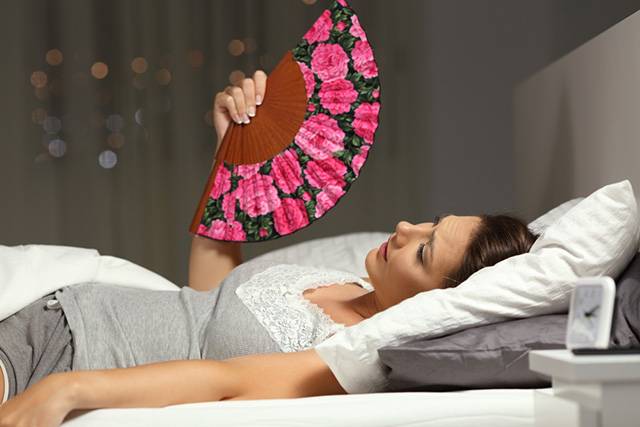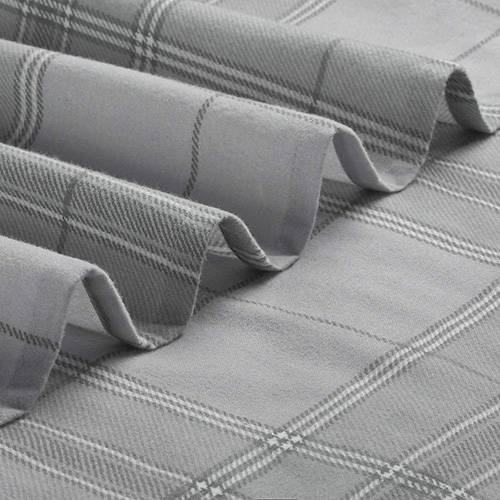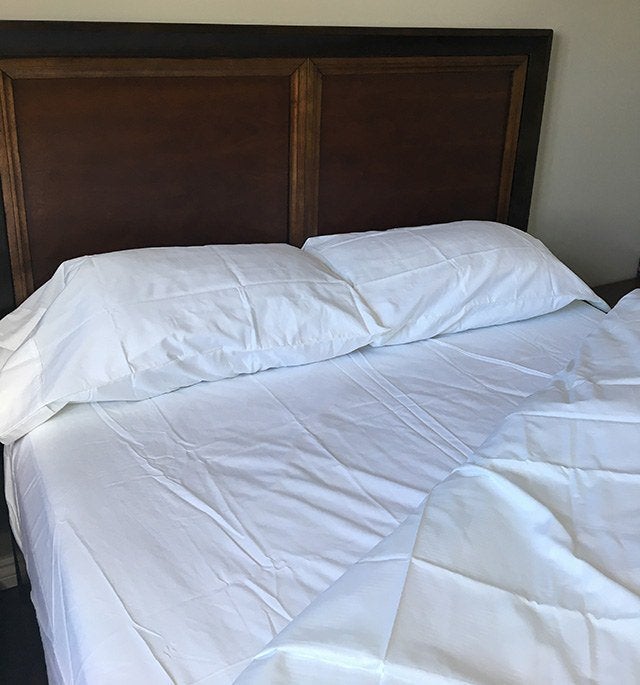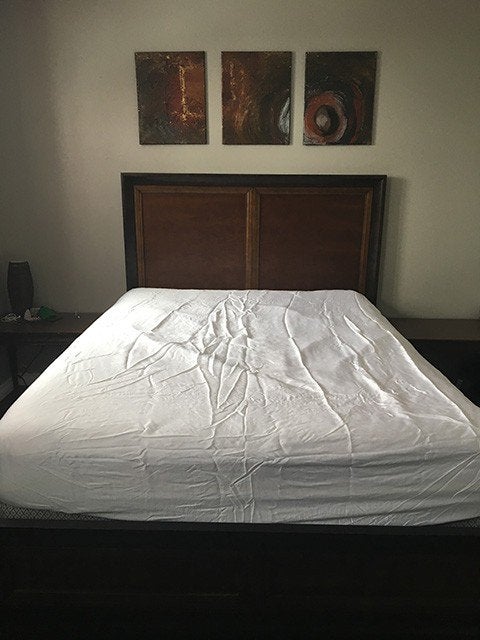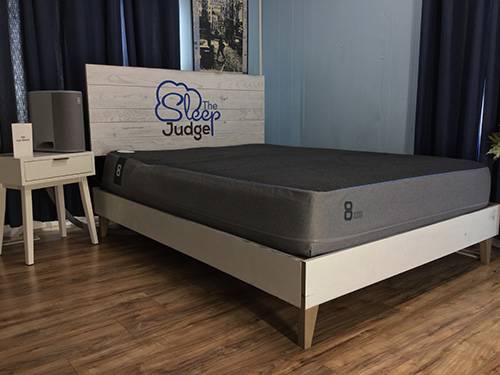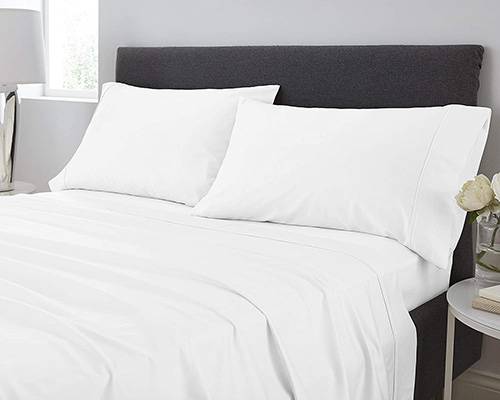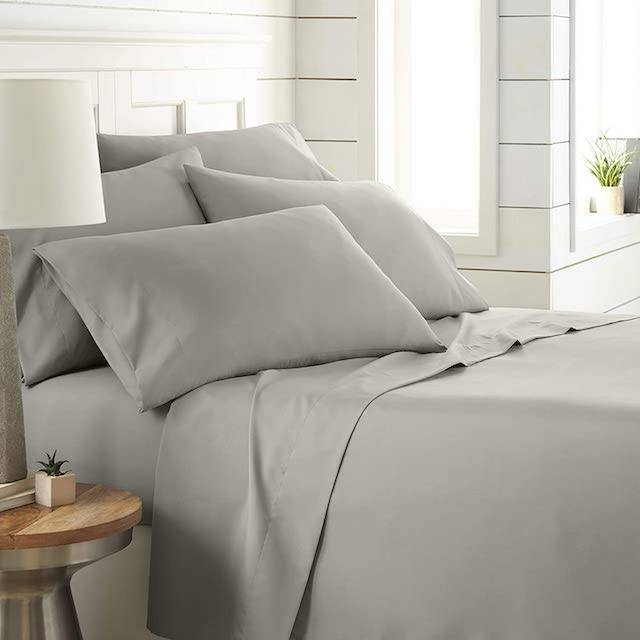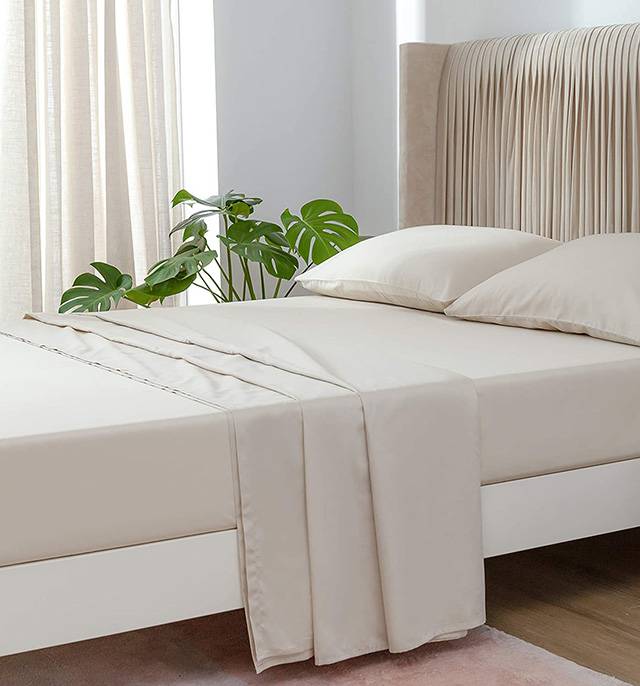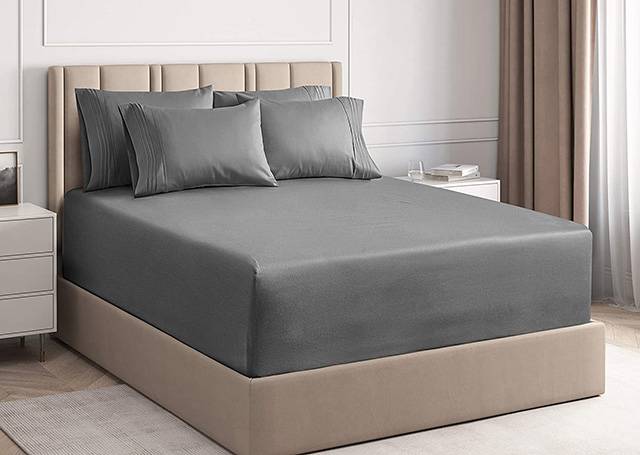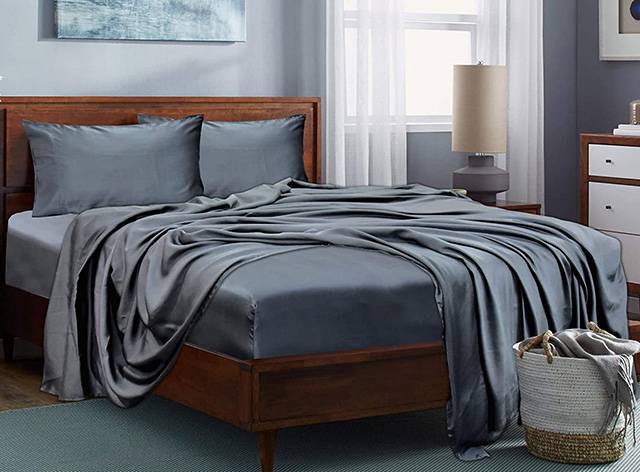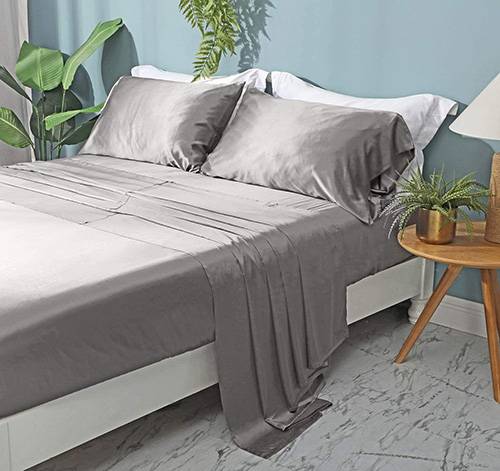2:00 a.m. rolls around. Long before you open your eyes, you know it’s going to be one of those nights. It feels like you’re lying in the aftermath of a downpour, your body is screaming for some cool air, and you’re parched.
Sound familiar?
Now that summer is here, it’s crucial to reevaluate your bedding—starting with the most essential component: your sheets!
Using sheets that are low-quality or inappropriate for the season can cause overheating and night sweats, which in turn can lead to a poor night’s sleep. In this article, we’ll discuss what the best cool sheet materials are and take a look at other factors to consider when choosing your sheets.
The Best Cool Sheet Materials
Before we dive in, it’s important to note that the best cool sheets for your bed might not be the best for someone else’s. This is because there are several different factors that can make a set of sheets “cool” or good for hot sleepers, and no one sheet material has it all. Let’s take a look at the key attributes to look for in your next set:
— Breathability
Breathability is arguably the most important thing for a good cooling sheet to have. A sheet is considered “breathable” if it allows for good air circulation and ventilation. This will help prevent sweat buildup and ensure that the sheet doesn’t trap too much heat. Natural materials—such as cotton, linen, bamboo, and eucalyptus—tend to be more breathable than synthetic materials. In addition, materials woven loosely offer greater breathability than those with a “tight” weave.
— Moisture Absorption
Sheets with a high rate of absorption tend to be good for those who sweat a bit in their sleep, though they’re not a great option for heavy sweaters. The moisture absorption these sheets provide helps keep you—and your bed—a whole lot drier by drawing the sweat from your skin and holding it until it dries. Cotton, linen, and other natural materials are known for their strong moisture absorption capabilities.
— Moisture Wicking
Moisture-wicking sheets are ideal for chronic hot sleepers or those who sweat buckets all summer long. Rather than holding the moisture in until it dries, these sheets actually “wick” the moisture back into the air. This means that they can keep you drier in the long-run and won’t get sopping wet when you’re having one of those nights. Synthetic materials—such as polyester and microfiber—tend to do a much better job of wicking away moisture than natural materials do.
— Thermoregulation
Thermoregulating sheets are those that can keep you cool during the summer and warm during the winter—their versatility means that you can use them all year-round! Three popular thermoregulating materials are linen, silk, and lyocell.
Best Materials for Cooling Sheets
1. Cotton
Cotton is classic, and it’s considered the gold standard for most bedding and clothing items. This material has a soft feel, good durability, a high rate of absorbency, and ample breathability. Combined, these factors equate to sheets that will keep you feeling cool and refreshed throughout the night.
If you opt for cotton sheets, you should go for either Egyptian cotton or Pima cotton. These cotton types are of the highest quality and can stand the test of time due to their durability (though they are a bit expensive). If your budget is your number-one concern, you can easily find more affordable standard cotton sheets in-store or online.
2. Linen
Linen has many of the same properties that cotton does, though to varying degrees. For example, linen is…
- …rougher in texture than cotton.
- …a bit more durable and longer-lasting.
- …better at wicking away moisture.
- …far more likely to wrinkle.
Another difference between cotton and linen is the price tag you’ll find attached. While cotton enjoys fairly simple harvesting and manufacturing procedures, linen is a bit more difficult in this regard—to compensate for this inconvenience, linen tends to cost more than cotton.
But, considering the material’s durability and aptitude for keeping one cool during the summer, we think it’s absolutely worth it!
3. Cellulosic Fibers
Who here knows what “cellulosic fibers” are? That’s right! Fibers made of cellulose. *snickers*
In layman’s terms, this means that the fibers are derived from plants (usually eucalyptus, oak, birch, or bamboo). These natural fibers then undergo a manufacturing process that turns them into a soluble compound, rendering them “semi-synthetic.” Due to their semi-synthetic nature, cellulosic fibers give users the best of both worlds, so to speak. For example, they offer the softness and elasticity of cotton and the durability of linen.
There are three “generations” of cellulosic fibers:
- Rayon
- Modal
- Lyocell
Let’s take a closer look.
4. Rayon
Traditional rayon is made using the “viscose method” of manufacture, which produces a silk-like end product that feels wonderful on the skin and drapes beautifully. While this cellulosic fiber material is the most common and comes with a wealth of benefits, its major con is that it can wrinkle or shrink easily during washing.
5. Modal
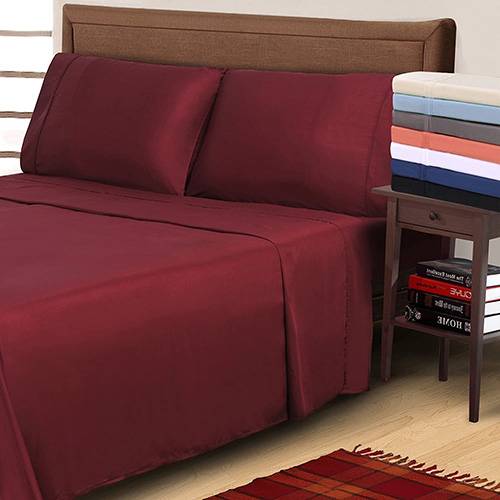
6. Lyocell (A.K.A. Tencel)
Lyocell is heralded for its high rate of moisture absorption and its delightfully soft feel. The X factor here is lyocell’s use of nano fibrils, which endow the fabric with the ability to not only absorb the moisture but also to draw it away from the body. This makes lyocell one of the ultimate cool sheet materials, despite its high price tag. You might find lyocell sheets marketed as Tencel, which is a popular lyocell brand.
7. Silk
Silk is a unique fabric that can keep you cool during the summer and warm during the winter—in other words, it’s thermoregulating (more on this later). While the material is cool, lightweight, and breathable, it can also “trap” heat to keep you warm and cozy at night. Though silk can be difficult to maintain, it more than makes up for this by being both attractive and seductively comfortable.
8. Polyester
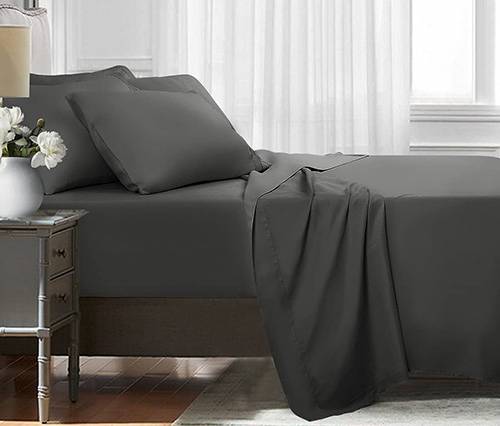
Conclusion
With the info gleaned from this guide, you should be well on your way to cooler nights and better sleep. Don’t hesitate to reach out if you have any questions or concerns regarding the best sheets to keep you cool—we’d be glad to help! Until next time, here’s to thermoregulating bedsheets.
Photo credit: Antonio Guillem/Shutterstock; fizkes/Shutterstock
